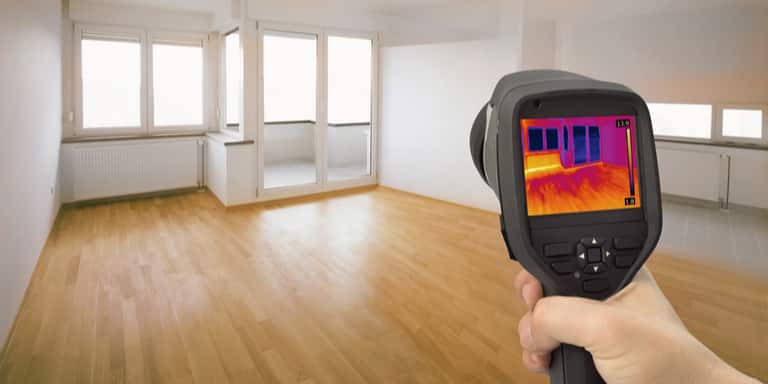13/12/2020
How to achieve thermal insulation of the roof when installing solar panels
The Mayan civilization worshipped the sun and considered it to be a cosmic deity responsible for providing the entire universe with strength, energy and power. They weren’t far from the idea we currently have of this star, right? Above all, in times when renewable energies, and in particular solar energy, are becoming increasingly important to curb global warming and build a more sustainable planet.
However, to achieve maximum respect for the environment when we install solar panels on the roofs of buildings, we must take into account what materials we use to achieve maximum efficiency. In this article we provide some good ideas.
Solar energy and sustainability
Solar energy is produced by light – photovoltaic energy – or the heat of the sun – thermosolar – for the generation of electricity or the production of heat. It is an inexhaustible and y renewable energy source, unlike traditional energy sources such as fossil fuels, whose reserves are finite.
Solar energy does not emit greenhouse gasses, so it does not contribute to global warming. In fact, it has been demonstrated as one of the most efficient renewable technologies in the fight against climate change. In addition, this type of energy is already cheaper than conventional sources. More and more countries are choosing renewable energy as the most sustainable and economical solution to move the world.
Spain is a clear example of this. Solar panels and photovoltaic systems are in full expansion in our country, especially as a result of the elimination of the sun tax. Last year, a historic record figure of 4,752 megawatts (MW) of photovoltaic solar energy was installed in Spain. More than double that in 2008, according to figures from the Annual Report of the Spanish Photovoltaic Union (Unef). It is also worth noting the growth of self-consumption, which accounted for 551MW of the 4,752 installed in 2019. Almost double that compared to 2018.
Thermal insulation for roofs with solar panels
Anyone who has a roof that can take advantage of the sun may be sitting on a goldmine. The installation of solar panels will produce a saving of €700 per year in the electricity bills of an average home in Spain, according to a study by Selectra.
However, when it comes to installing solar panels on the roof of our home, we run into a problem: ensuring that the thermal insulation of the roof is not impaired and guaranteeing the perfect union between our roof and the panels.
Chemical fixing systems can be our greatest ally to avoid this. Quilosa offers different options that cover all needs depending on the type of support where the installation will take place.. They are the right choice for fixing, guaranteeing maximum efficiency.
Another option is the PU-60 sealant, a high modulus polyurethane elastic adhesive. Among its advantages we can highlight its great resistance and high capacity to withstand dynamic stresses, shocks or vibrations.
Both products guarantee a sustainable and long-lasting fixation of the solar panel on the roof, without compromising the roof’s thermal insulation. Installing solar panels or photovoltaic panels on the roof of a home or building can put the sustainability of the building at risk if it is not done correctly.
Having products that lead to a correct joining of the solar panel and the roof, that guarantee their correct operation and that, in addition, improve the thermal efficiency indoors, is essential for achieving a sustainable home. Protecting roofs with systems such as the COOL-R waterproofing membrane is essential for achieving these objectives. Thanks to the high reflectance of this product, we are able to reduce the roof’s temperature during the months with the most sunshine, a characteristic that improves the performance of solar panels and photovoltaic panels. This is not a minor point. The optimum temperature range for many of these panels is below 32°C and in the case of exceeding 43°C their performance can be reduced by up to 50%.
Innovations in the thermal insulation of roofs with solar panels
Using chemical fixing systems instead of mechanical ones is one of the trends that is gaining strength in the construction sector. Not only because of advances in research, which have managed to make the composition of these products more sustainable, but also because they are proving to be the most efficient option to guarantee the durability and insulation of buildings.
Quilosa stands out in the development of these products.. For the near future, they are creating an adhesive that allows the joining of the solar panel to the aluminium profile that always go together in the installation. Fixing that is usually done mechanically but that Quilosa trusts in being able to carry out chemically so that the installation of the solar panel is as efficient as possible, developing a product that, in addition to guaranteeing maximum support, also manages to withstand UV rays, high temperatures or weather elements such as rain.
In conclusion, behind solar energy there are endless advantages, both economic and sustainable. Quilosa offers complete solutions so that solar energy is environmentally responsible even in the installation of solar panels. Creating a more sustainable planet is everyone’s responsibility and Quilosa provides us with the necessary tools to achieve just that.
Sources: ABC, La Vanguardia




